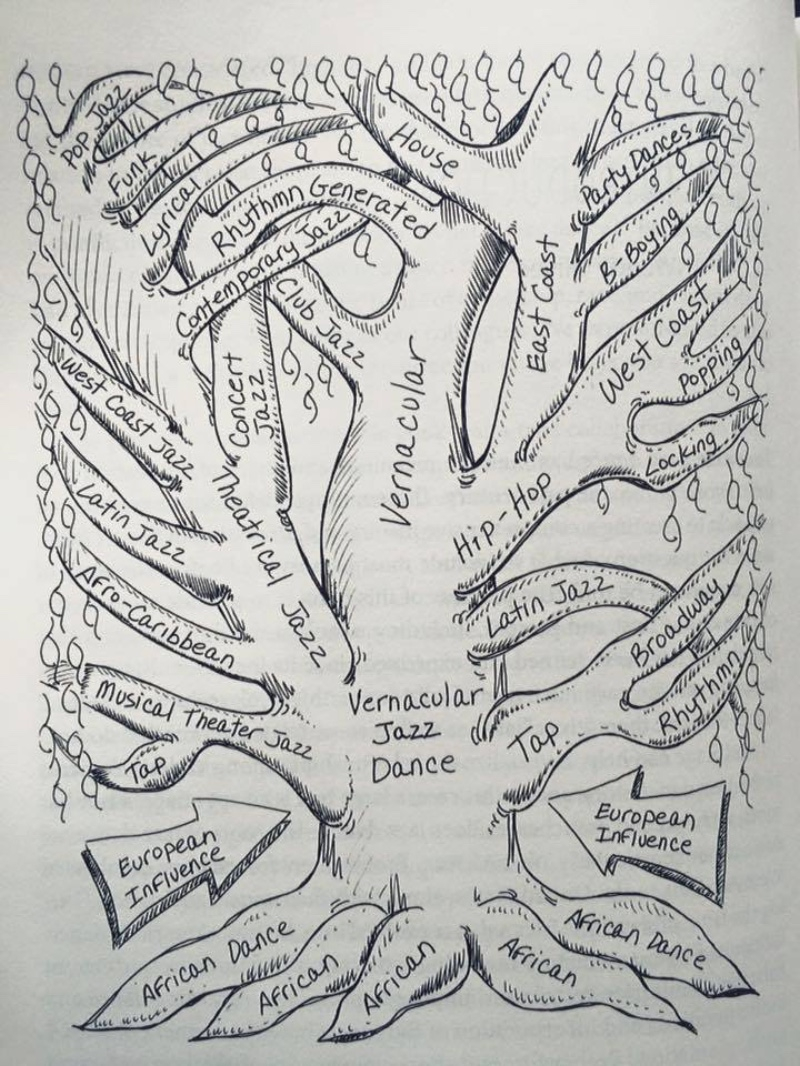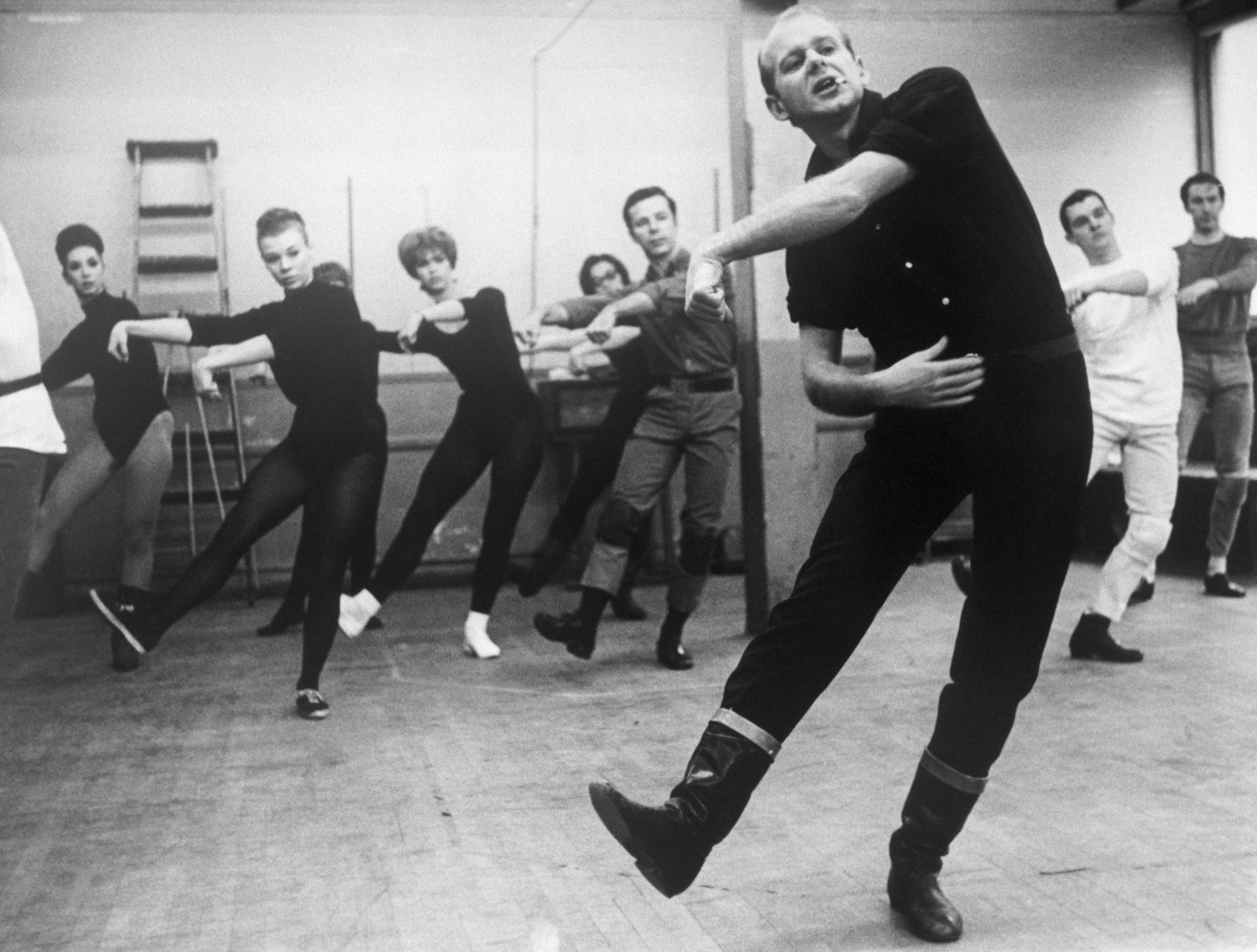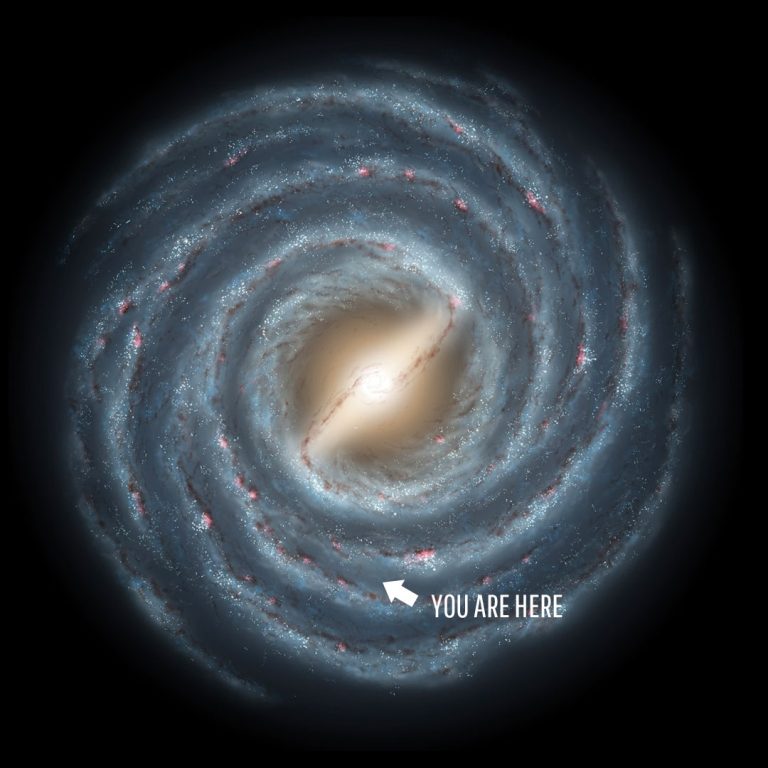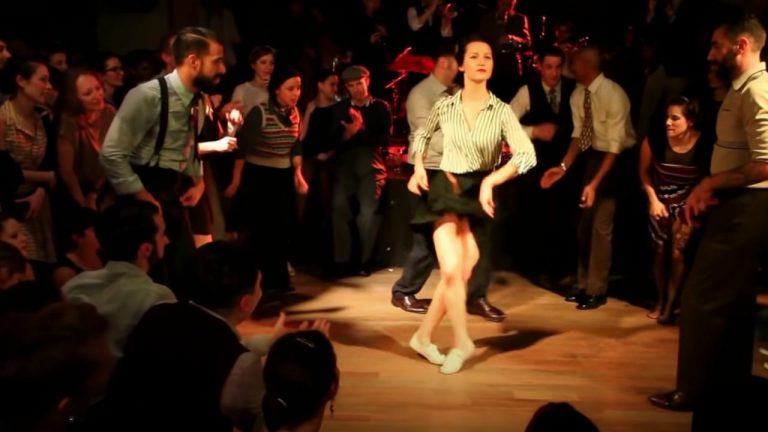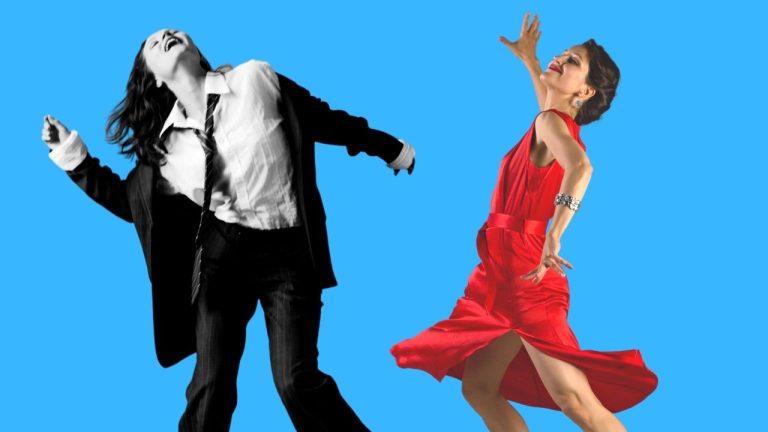(Solo) Jazz dance is an umbrella term collecting many dancing styles with different history. Let’s clarify a very common and equally most confusing topic of what is the difference between vernacular, authentic, modern and solo jazz dance. This way we can understand the characteristics and history behind each better.
To be proficient in any specific or chosen art form, one needs to know the history, the journey of the specific creative expression and the aesthetic in question
Dolly Henry
According to Patricia Cohen, Master Registered Dance Educator, jazz dance evolved through the first half of the 20th century to include elements of both Africanist and European dance. In order to better understand what jazz dance is we need to refer to it as a continuum, based in West African roots with diverging vernacular and theatrical branches. Each of the branches are continually creating new offshoots that gradually but inevitably generates newer blended jazz dance forms.
Jazz dance tree
The history of jazz dance is best understood by thinking of it as a tree.
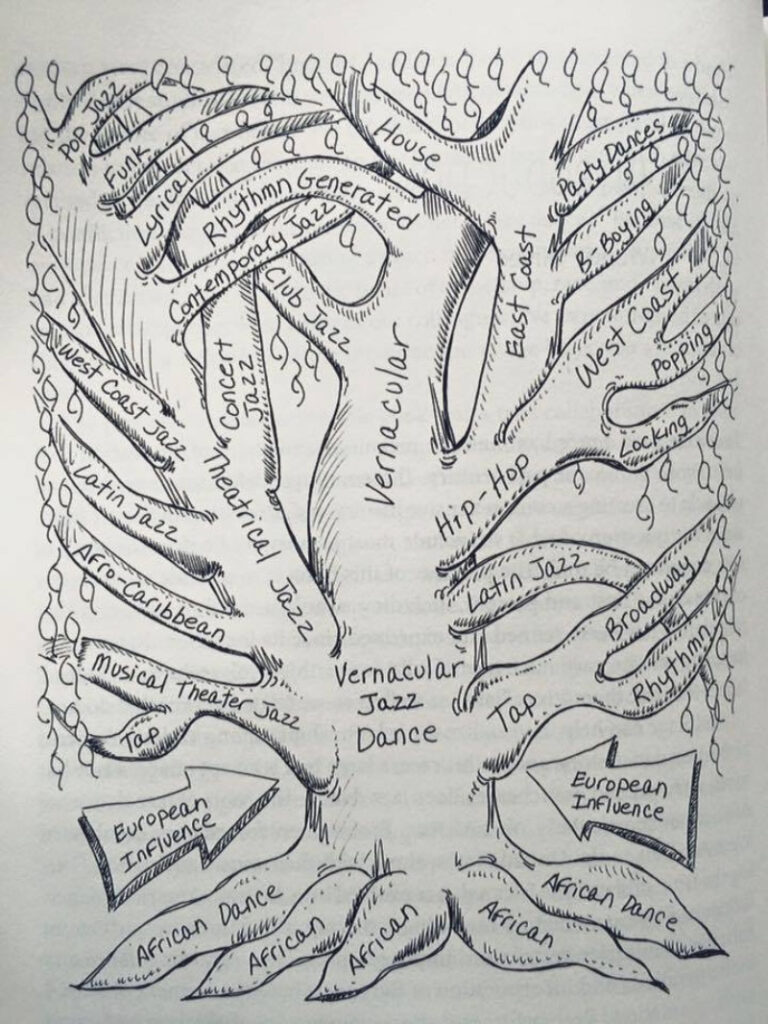
The roots of jazz dance are African. Its trunk is vernacular, shaped by European influence, and exemplified by the Charleston and the Lindy Hop. From the vernacular have grown many and varied branches, including tap, Broadway, funk, hip-hop, Afro-Caribbean, Latin, pop, club jazz, popping, B-Boying, party dances, and more.
Interestingly, today the term “jazz dance” can be confusing as to what it refers to. Nowadays, it is often connected to modern dance (which is a fusion between jazz dance and contemporary) and ballet-based dance forms, which carry some jazz dance characteristics but are only loosely (or not at all) connected to jazz music. Although from the end of the 1910’s term “jazz dance” was referring to black dance forms that are deeply connected to jazz music styles.
The term “authentic jazz dance” is a good alternative to use today in order to be understood correctly when referring to the original black jazz dance forms.
Let’s start our journey through the jazz dance history by clarifying the general confusion that is often made with the names.
What is solo jazz (dance)? Is it the same as authentic or vernacular jazz?
Nowadays the swing dance community refers to solo jazz dance (jazz steps/ vintage jazz/ jazz roots) as dancing alone to jazz music styles. It comes without any influences of ballet or any other contemporary techniques. It is mainly characterised by improvisation, syncopated steps and rhythms, call and response to music, all while featuring the vocabulary and steps of the vernacular jazz tradition.
Solo Jazz can be danced free and improvised or in routines such as Shim Sham Shimmy, Big Apple or Tranky Doo.
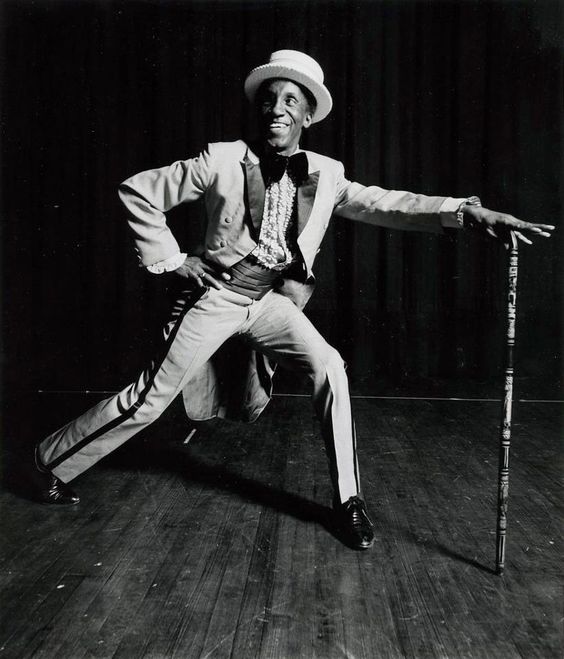
Essentially, it is a general term to group many dance styles under one “umbrella” name. It can refer to anything from the pre-cakewalk dances of mid -19th century to post war era styles and be bop.
What is the difference between authentic and vernacular jazz?
Authentic Jazz
Let’s first understand the meaning of the word “authentic”, which is of undisputed origin and not a copy, genuine. The term “authentic jazz dance” is in use from the end of the 1950’s when writer and researcher Marshall Stearns began to use it, in the attempt to differentiate it from the modern jazz dance which has little or nothing to do with jazz music.
Authentic jazz is vernacular jazz from the early 20th century and it includes the Cakewalk, the Charleston, the Black Bottom, and the Lindy hop.
Authentic jazz movements like the Boogies, the Suzie Q (Susie Q), the Tacky Annie (Tack Annie), can be seen in chorus line dancers performing in “soundies” (a type of short musical clips), vaudeville acts, musicals of the 20’s, 30’s and 40’s. They could also include tap, toe-heels steps, shuffles, the over-the-top, adding syncopations and rhythms to the music it was danced to. All of these movements can be described as vernacular due to the common origin they share: African-American social dances born from everyday life.
Authentic jazz brings together the elements of African-American vernacular, traditional dance. These elements are the individuality of the dancer, polyrhythmic patterns in addition to an already syncopated music, vitality and dynamism, improvisation, blended with a taste of personal exploration and freedom in composition. This is why it is continuously evolving, as it still is today.
Vernacular Jazz
Vernacular dances are dances which have developed naturally as a part of everyday culture within a particular community. In contrast to the elite and official culture, vernacular dances are usually learned naturally without formal instruction. Marshall and Stearn refer to vernacular jazz dance in its “street” form, in contrast to the show business form.
In “Steppin’ on the blues”, by Jacqui Malone, we read: “[…] the term vernacular refers to dance performed to the rhythms of African American music: dance that makes those rhythms visible”.
“[…] vernacular dance. It derives not from the “academy” but from the farms and the plantations of the South, slave festivals of the North […]. Their work movements become dance movements and so do their play movements ; and so do all the movements they use every day, including the way they walk, stand, turn, wave, shake hands[…]”
Albert Murray, Stomping the blues, p. 24 of Steppin’ the blues, J. Malone
In the book “Ballroom, Boogie, Shimmy Sham, Shake: A Social and Popular Dance Reader”, edited by Julie Malnig, the terms “social”, “vernacular” and “popular” are used interchangeably, although they carry slightly different connotations. Social carries a sense of dressiness and elevated environment, popular bespeaks widespread acceptance.
Most of the social and jazz dances described above are vernacular in the sense they spring from the lifeblood of communities and subcultures and are generally learned informally, through cultural and social networks
Julie Malnig, Introduction, p. 4
According to Dollie Henry and Paul Jenkins, the early development of the jazz vernacular was influenced by dance steps and movements that can be recognised from the traditional African-American dance vocabulary and accompanying music. Although many of these have been lost, another part is still visible in derivative jazz dance styles like
-Cakewalk
–Charleston
-Hoffin’
-Tap dance
-The shuffle
-Turkey trot
-Buzzard lope
-Truckin
-The Lindy (hop)
Its hallmarks are improvisation and spontaneity, propulsive rhythm, call and response patterns, self expression, elegance and control.
As Lindsay Guarino and Wendy Oliver state, vernacular and authentic jazz are similar but not the same. All authentic jazz is vernacular jazz, but vernacular jazz is not limited to authentic jazz. While authentic jazz is vernacular jazz from the early 20th century, vernacular jazz refers to more than one period. It is fluid and constantly evolving.
The authors of the “jazz dance styles” article highlight the following dance styles as branches of vernacular jazz dance today: hip hop, funk (urban funk), street jazz dance (L. Guarino and W. Oliver, Jazz Dance: A History of the Roots and Branches).
What is modern jazz?
In the UK throughout the 1970’s and 80’s the term modern jazz was generally used to describe traditional jazz dance as described above.
What is jazz in the academic dance world?
Jazz dance took on a metamorphosis during the 1950s with innovators such as Katherine Dunham, Jake Cole, and Bob Fosse.
In the academic dance world, what today is meant for “jazz” is basically a modern style that combines ballet technique, useful for jumps, leaps and pirouettes with elements of modern and contemporary dance. It is mainly characterised by body alignment, with the addition of contractions and tilts; it also includes percussive movement and fluid movement in a juxtaposition. Nevertheless, there’s still room for experimenting, hybridising and improvising.
Katherine Dunham reinforced jazz dance’s connection with its African origins through a dominating feminine energy and a style of dance. The style involved flexible torso movements, articulated pelvis and isolation of the limbs, polyrhythm combined with ballet technique. She is credited for shaping the modern jazz dance style and technique. Katherine Dunham technique was the result of African-Caribbean dances combined with ballet which was a signature element of her choreographies. This was the starting point for modern dance to evolve.
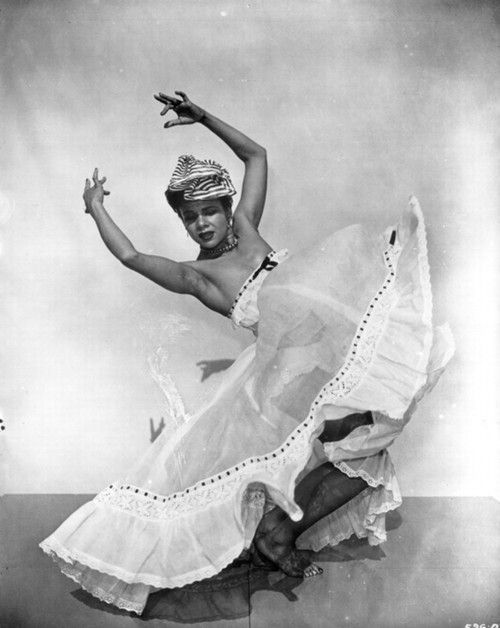
In the meanwhile, Bob Fosse was highly influential in the development of jazz dance in movies. He was building upon Jack Cole’s popularisation of Theatrical jazz dance, whilst also weaving burlesque and vaudeville stylisations into his choreography.
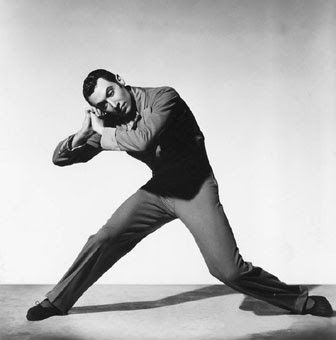
The transformation of jazz dance into theatrical jazz dance and the important role of professional technique and choreography, created “modern jazz dance”.
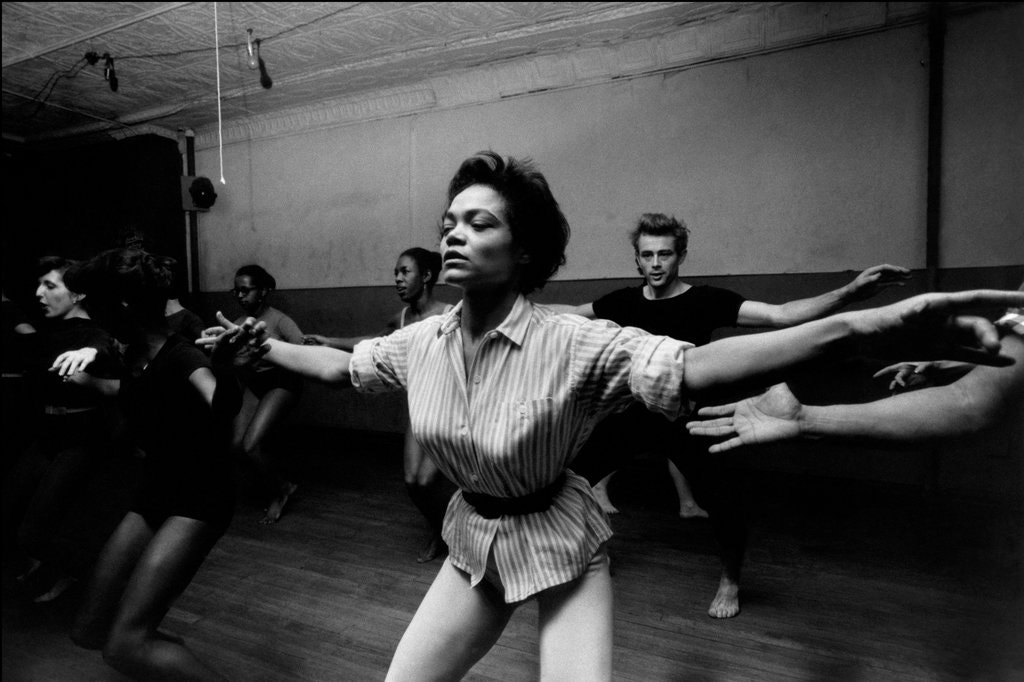
Pearl Primus was an American dancer, choreographer and anthropologist also gave her contribution to the development of modern dance. Like Katherine Dunham she was deeply interested in the African cultural heritage and how African traditional dances could play a key role in the development of modern American dance. She is credited to have presented African dance to American audiences, giving voice and dignifying vernacular traditional dances as true art forms.
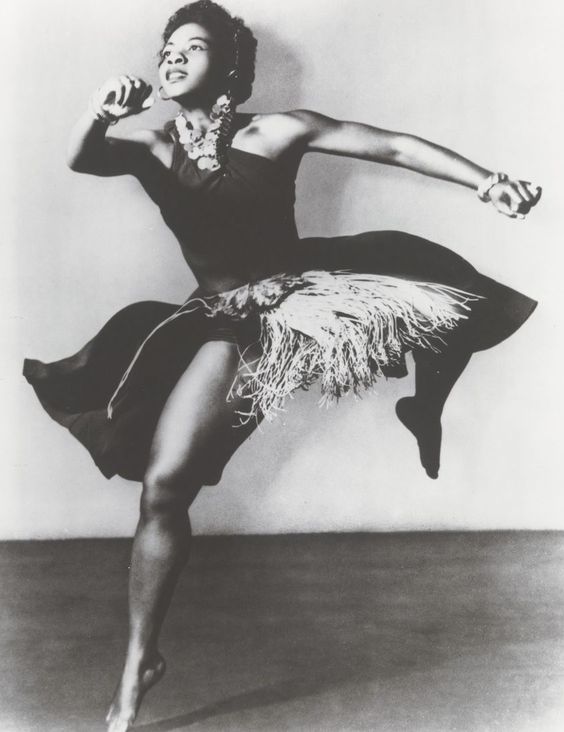
As a dancer, Primus was distinctive in other ways. When her style is compared to that of the other leading black dancer, Katherine Dunham, it is clear that one of the few things they had in common was their use of dance elements from Africa and the Caribbean (from Perpener III 162-163, African-American concert dance).
Conclusion
To sum up, by using Lindsay Guarino words, jazz dance has roots in West African traditional dance. It came to America via the transatlantic slave trade and then emerged as jazz in the 20s, 30s and 40s — which we now call the Jazz Era. Later it made it’s way on to theatre stage, where stories were told through jazz dance, and covered its commercial side in film production.
Solo jazz dance is a general term used in nowadays swing dance community. It groups many dance styles that can refer to anything from the pre-cakewalk dances to post war era styles and be bop.
Authentic jazz is a term in use from 1950’s by Marshall Sterns, to describe vernacular (traditional) jazz dances that refer to the early 20th century. It includes the Cakewalk, the Charleston, the Black Bottom, and the Lindy hop.
Vernacular jazz is a term that refers to more than one period. Vernacular dances are the ones which have developed naturally as a part of everyday culture within a particular community.
Modern jazz dance is a term used in the academic dance world. It refers to a modern style that combines ballet technique with elements of contemporary and African – derived dances (such as isolations, loose torso etc.).
Here on Secrets of Solo you can discover and learn solo jazz (authentic jazz and vernacular jazz) steps and choreographies. Our online solo jazz dance classes pay homage to the creators of these steps, and we try to pass on these traditions to current generations.
As the styles are continuously evolving we feel it is our responsibility to keep pushing the boundaries. Therefore more and more modern styles such as contemporary, waacking, vogue, and house are entering into our teaching repertoire. Consider signing up for Secrets of Solo online dance classes. You can check subscription plans here.
Bibliography and references:
The Essential Guide to Jazz Dance, Dollie Henry, Paul Jenkins
Jazz Dance: A History of its Roots and Branches
Representing Jazz, Krin Gabbard
Stomping the blues, Albert Murray
Ballroom, Boogie, Shimmy Sham, Shake: A Social and Popular Dance Reader
Modern Jazz dance. 1971, Dolores Kirton Cayou,
Anthology of American Jazz dance Evanston. Illinois, USA, 1975, Gus Giordano
Creque Harris, Leah (1991). The Representation of African Dance on the Stage: From the early black musical to Pearl Primus. Atlanta, GA: Emory University
African-American Concert Ham The Harlem Renaissance and Beyond John 0. Perpener III
Co – writer and editor Ksenia Parkhatskaya
